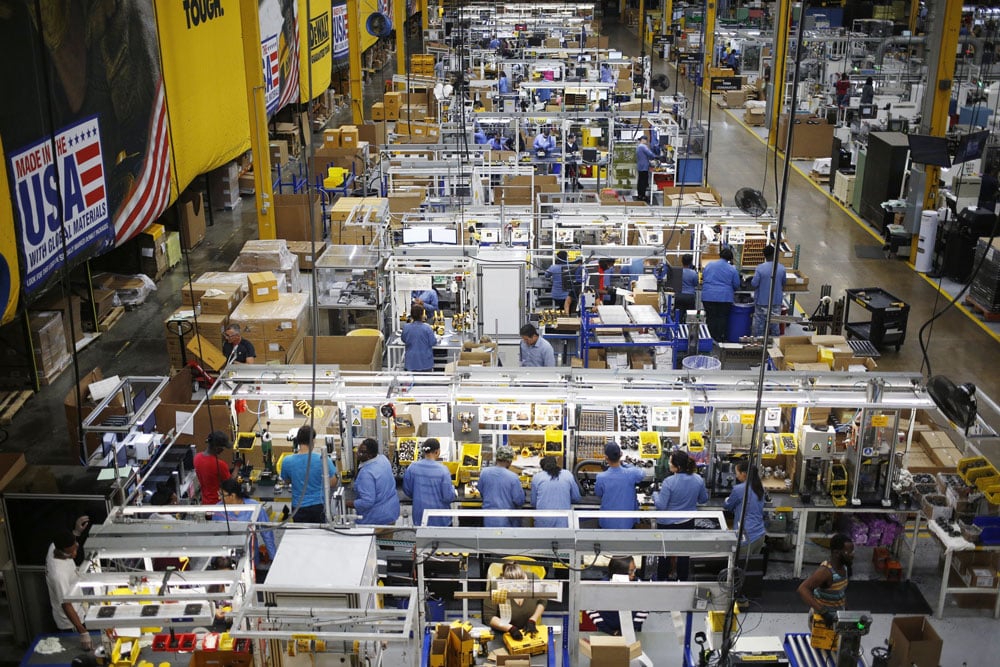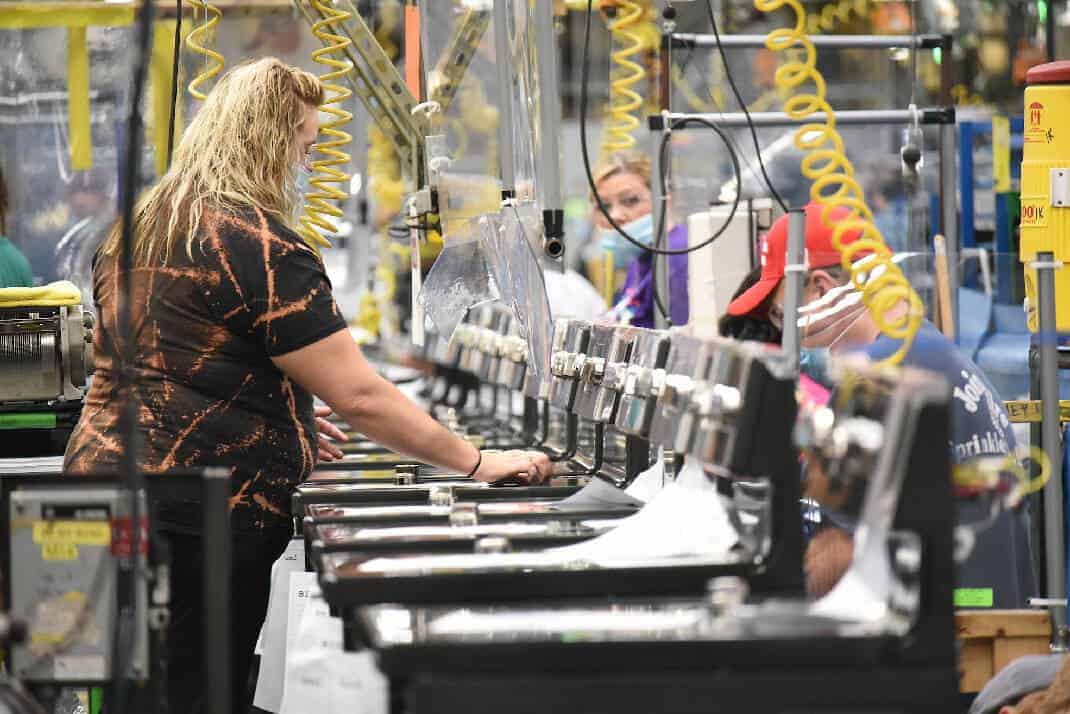The majority of employers hire hourly workers. Despite hourly workers making up the majority of the workforce, employers have challenges hiring hourly employees and retaining them for a long enough time to make the hiring processes worthwhile.
When hourly employees do not stay long, employers lose money having to recruit and hire new employees. The cost of replacing an hourly worker can cost up to 30% of their annual earnings. For employers, hourly-worker turnover is a costly expense that takes away from the bottom line.
The problem with hiring hourly employees stems from the demographics of the people applying for these positions. Employers often think they are recruiting hourly employees under 25, but the majority of hourly workers are over age 25, with a third of them being over age 45.
Fortunately, technology is making it easier for employers to find and retain their hourly workers. Unemployed, underemployed, and employed people use technology to look for work. If you aren’t engaging them in the digital world, you miss out on many people who want a job and want to keep it.
Engage with SMS and Messaging Apps
Many employers ask that their candidates provide an email. Then, employers only communicate through it. Unfortunately, email is no longer the preferred method of communication by candidates. While they might rely on email to share files or photos, when it comes to quick conversation, they rely on SMS and messaging apps.
To meet candidates where they are, employers who are hiring need to engage with them through the apps they use. People are quick to check their SMS text apps and messaging apps. But, they aren’t as quick to check email, simply because emails add up, and businesses bombard people with spam and advertisements.
With text and messaging apps, candidates and employers can use technology to
- Communicate one-on-one in real-time
- Quickly address questions about the hiring process
- Use collaboration tools, like video
- Schedule interviews and other time-sensitive events
With email, the process slows as the real-time speed drops. Yes, mobile phones and computers can send notifications when new emails arise, but so many are spam messages that the notifications are often overwhelming.
Embrace CRM Software and Talent Acquisition Software
Another useful tech tool that helps employers streamline their hiring practices is whole-business software, like CRMs and talent acquisition systems. Offices use CRM, customer-relations management systems, to organize their interactions with customers and vendors better. But, the systems also help businesses manage their hiring, too.
With a CRM, businesses can put all of their customer information in one easy-to-access location. CRM systems can be accessed via the web or through closed systems. When it comes to hiring hourly workers, CRMs can store candidate information so all employees who need to fill positions in their departments can use the same database.
Using a CRM to store and organize candidates takes pressure off of all departments, including human resources. Managers can sift through resumes and make decisions within their departments.
CRMs can be used similarly to dedicated talent acquisition software. TAS helps recruiters and human resources managers organize their talent information. The software systems automate the hiring process to better source, screen, interview, hire, and train their employees. Large employers often use these. CRMs can fill the same need for smaller businesses.
Automate Interview Scheduling
Most employers include interviews as a part of their hiring processes. But, scheduling interviews the traditional way can be time-consuming. Playing phone tag is annoying for all parties. Rather than relying on phone calls to schedule interviews, employers can automate their interview-scheduling process.
Several Apps to Choose From
Several apps allow businesses to automate their interview. The automated systems work with email, messaging apps, and text messages for communication. They integrate with calendar apps, so both the interviewer and the candidate have a record of the upcoming meeting.
Considering that many of the best candidates might already have jobs, making a phone call during the workday is tough for candidates who need to arrange interviews. Automating the process lets candidates arrange interviews privately.
Reduces Human Error
Automated systems like this take human error out of the equation. By clicking on a date and time, the app sends a confirmation and blocks time automatically on each party’s calendar.
People do not have to do anything with their calendars, other than go to the interview at the set time. Without automation, people often miss their interviews because they made a mistake when adding it to their calendars.
Add AI to Your Hiring Process
Artificial intelligence (AI) is changing the way that companies are moving through their hiring processes. There are already several large companies that have automated most of the hiring process. Their AI systems sift through the plethora of applications they get, and they conduct quick interviews of top applicants.
Those short interviews help the automated systems decide which candidates should move on to meet with a human employee. With automated hiring processes, businesses can speed up the entire process and fill open jobs with qualified applicants.
AI can take care of several processes, from keeping track of open jobs, assessing applications and resumes, and conducting interviews. Some AI systems run candidates through personality tests and skills tests to determine who would be the best fit. AI systems do it without bias and human error.
AI systems can also take care of gathering paperwork with digital systems. These systems also can conduct background checks and record video interviews so stakeholders can watch them later. They also integrate with learning management systems (LMS) for onboarding and training sessions.
Hiring managers can use AI to answer candidate questions. AI chatbots can manage frequently asked questions, just like they do with customers who are shopping online. The chatbots are available 24-7, unlike employees who are sitting at desks answering calls over the phone.
The beauty of using an AI chatbot is that candidates and employers have a record of the conversation. Most chatbots can send a transcript to an email, so employers can see what their candidates know, when they want to know it.
Automate Your Referral Programs
Your employees are one of your most useful tools for finding new candidates. They know people who want to work, and they take pride in sharing job opportunities with their friends and family. If you’re going to get the most out of your employee referral programs, you need to automate them.
Employees may not know how to help their friends and family find job opportunities. They may not even know that opportunities exist. But, when employers have one central location that is easy for employees to access, they are more likely to refer the options to the people they know.
When sharing job opportunities, employers need to share them regularly. Sharing them once isn’t enough. Employers need to share open positions when their employees are in a spot to look at them.
To track referrals, some businesses are turning to gamification. Employees who refer candidates can earn points and work their way up leaderboards. Automated systems keep track of the referrals, and how many of them turn into new hires. Publishing leaderboards incentivizes employees to start talking to their friends and family about job opportunities.
The referral leaderboards can be connected to talent acquisition software. Hiring managers do not need to use any sort of manual tracking because the software does the job for them.
Next Steps
When you adopt high-tech strategies for hiring hourly workers, you will find that your worker quality improves. Employees will stick around, and you might actually start to build a database of highly qualified candidates. Rather than waiting until the last minute to fill a position, you can turn your database and call candidates you want.
If you aren’t ready to fully automate your hiring process, there are small steps you can take. Try communicating through text or messaging apps first. If all goes well, then prioritize employee referrals and automating that process. Eventually, your comfort level will increase.
Employees and candidates will see that your business is a place where they want to work. Then, word will spread, and your business will become the place that everyone wants to work. Isn’t the goal to be the employer who never needs to place a help-wanted ad because your positions consistently stay filled? This is a good goal for any employer and one that is achievable.





